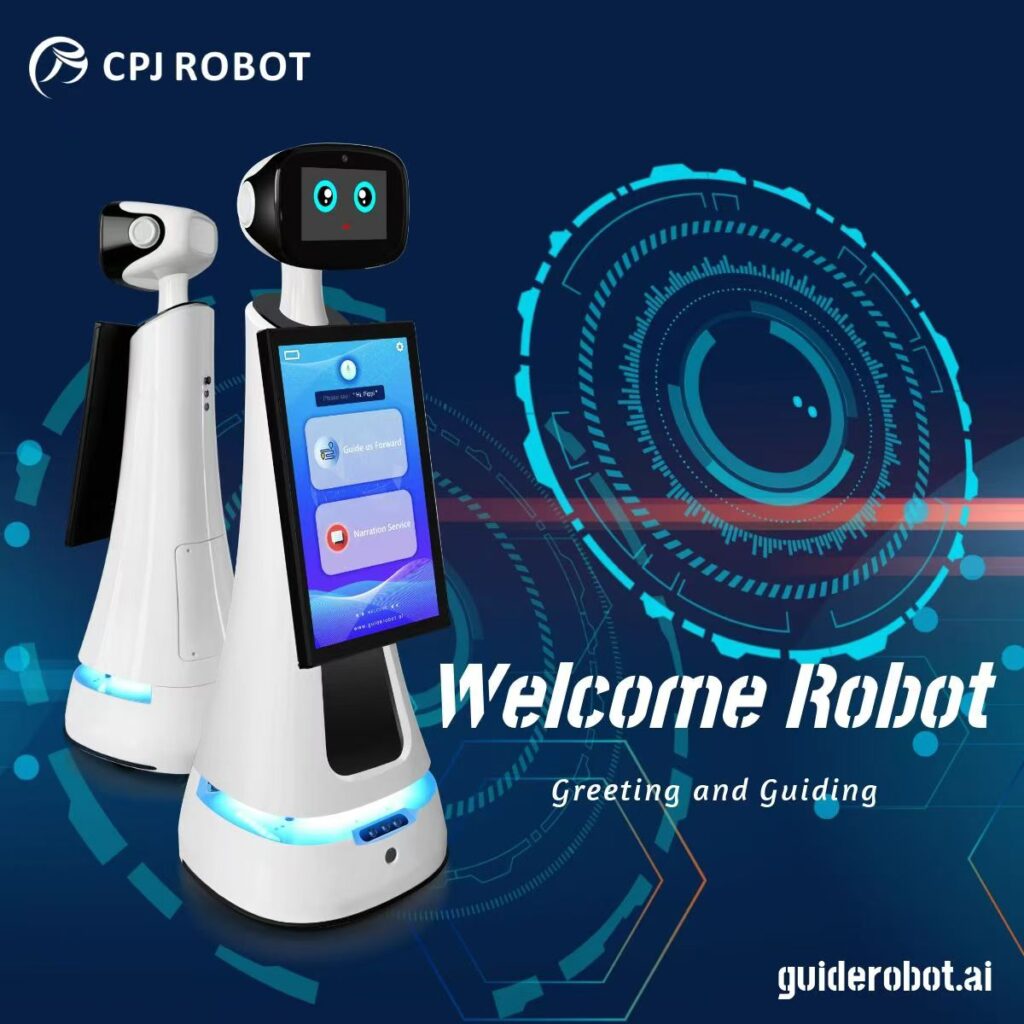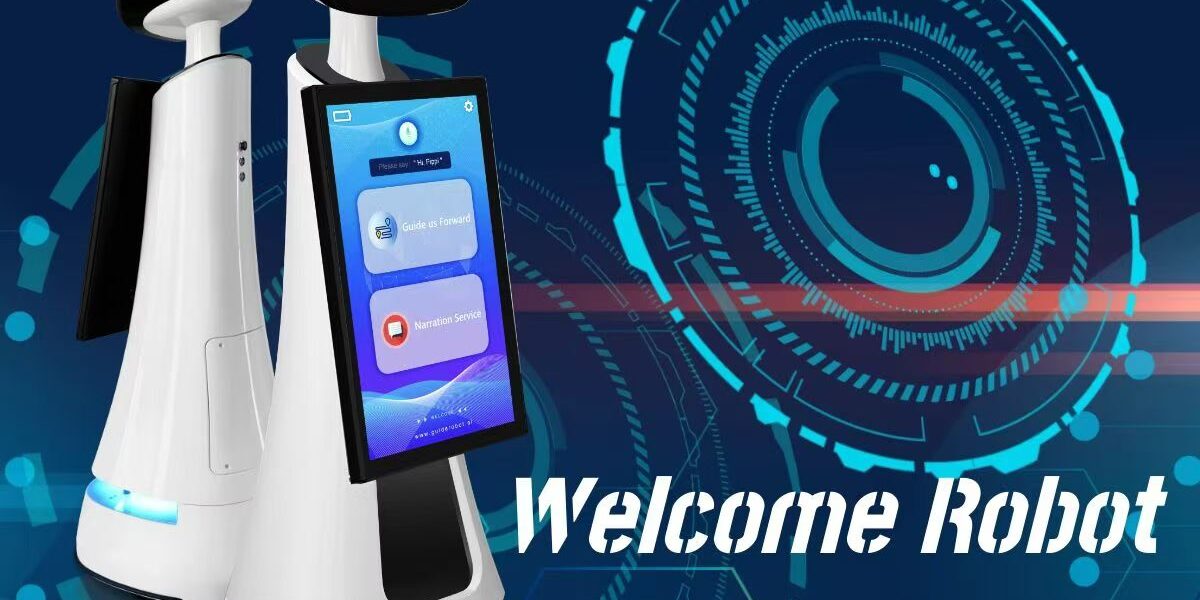One such innovation leading this transformation is the commercial intelligent welcome robot. These robots are becoming indispensable in various sectors, from hospitality to retail, helping to improve visitor engagement and operational efficiency. But what exactly makes these robots so valuable? Let’s explore the key features and benefits of commercial intelligent welcome robots.
Core Functions of Commercial Intelligent Welcome Robots
- Automated Reception and Guidance
One of the primary functions of a welcome robot is its ability to automatically greet and guide visitors. Equipped with advanced sensors and AI technology, these robots can identify guests upon arrival and offer personalized assistance. For example, in a hotel lobby, a welcome robot can greet guests, guide them through the check-in process, and even provide information about hotel services. This automation not only improves customer satisfaction but also reduces the workload of human staff, allowing them to focus on more complex tasks. - Information Inquiry and Feedback
Welcome robots can serve as a dynamic information hub for visitors. They can provide real-time information on a variety of topics such as company profiles, business services, event schedules, or product catalogs. With intuitive voice and touch interfaces, these robots make it easy for visitors to find exactly what they need without waiting in line or relying on human staff. - Data Collection and Analysis
Another significant function of commercial welcome robots is their ability to gather data from interactions. Using sensors and cameras, the robots can collect information about visitor behavior, preferences, and even emotional responses. This data can be processed and analyzed to provide businesses with valuable insights into customer preferences, helping them tailor their services and improve overall customer engagement.

Enhanced Interaction Capabilities with Artificial Intelligence
Commercial intelligent welcome robots are not just machines—they are smart, interactive assistants. Thanks to AI technologies, these robots offer a range of advanced interaction capabilities:
- Natural Language Processing (NLP)
With NLP, welcome robots can understand and process spoken language, enabling them to hold fluid and natural conversations with visitors. This means that the robot can answer questions, provide directions, and even engage in friendly small talk, creating a more personable experience for the guest. - Emotion Recognition and Response
By using facial recognition and emotion analysis, these robots can detect a visitor’s mood and adjust their responses accordingly. For example, if a visitor appears frustrated or upset, the robot can offer a more empathetic tone or provide assistance in a way that helps alleviate the visitor’s concerns. - Multimodal Interaction
To ensure a richer and more engaging user experience, many welcome robots are equipped with multiple interaction modes. These include voice commands, touchscreen interfaces, and gesture recognition. This flexibility allows visitors to interact with the robot in the way that is most convenient for them, further enhancing their overall experience.
Practical Applications Across Various Industries
Welcome robots are being deployed in a wide variety of settings, each tailored to meet the specific needs of the environment. Here are some of the most common applications:
- Hotels and Restaurants
In the hospitality sector, welcome robots play a crucial role in greeting guests and assisting with check-ins, bookings, and room information. In restaurants, robots can help with menu browsing and ordering, reducing wait times and improving customer service. - Retail and Shopping Centers
In retail environments, welcome robots can guide shoppers through the store, suggest products, and even promote special offers. By providing real-time promotions and assistance, these robots can enhance the customer shopping experience and increase sales. - Corporate Lobbies and Trade Shows
At corporate headquarters or trade shows, welcome robots can efficiently handle visitor registrations, provide company information, and guide guests to the correct departments or booths. They help improve operational efficiency while also serving as a high-tech attraction for visitors.
Potential Challenges and Solutions
While welcome robots bring significant benefits, they are not without challenges:
- Technology Limitations
Despite advances in AI, these robots may sometimes struggle with issues like misidentifying visitors or failing to understand accents and complex queries. However, continual improvements in AI algorithms and machine learning are helping to overcome these limitations, making the robots more accurate and responsive. - Privacy and Security Concerns
Since these robots collect a great deal of data, including personal information and behavior patterns, there are privacy and security concerns. To address this, companies must implement robust data protection measures, such as encryption and data anonymization, to ensure that customer information is kept secure. - Maintenance and Upkeep
Like any technology, welcome robots require regular maintenance to ensure they continue functioning smoothly. Businesses should implement flexible maintenance strategies, including regular software updates and hardware checkups, to prevent technical failures.
The Role of Artificial Intelligence in Enhancing Welcome Robots
Artificial intelligence (AI) is at the heart of the capabilities of commercial welcome robots. With AI, these robots can process vast amounts of data in real-time to make decisions, personalize services, and even predict customer needs. The integration of AI can transform robots from basic assistants to intelligent, adaptive systems that continuously improve their performance based on data insights.
- Data-Driven Decision Making
AI allows robots to collect and analyze data that can provide businesses with actionable insights. For example, they can identify patterns in customer behavior, preferences, and even predict future trends. This allows businesses to optimize their operations and improve customer service. - Personalized Services
Through machine learning, welcome robots can offer increasingly personalized services. For instance, they can recognize returning customers, recall their preferences, and offer tailored recommendations or greetings, making each interaction more meaningful and customized. - Real-Time Monitoring and Feedback
AI-powered robots provide businesses with real-time data on customer interactions, enabling them to quickly respond to issues or adjust strategies as needed. This helps businesses stay agile and responsive in dynamic environments.
Conclusion: Unlocking the Potential of Commercial Intelligent Welcome Robots
In conclusion, commercial intelligent welcome robots are revolutionizing how businesses interact with their customers. From enhancing customer experiences to streamlining operations, these robots are becoming an essential tool for businesses aiming to stay competitive in today’s digital age. By leveraging AI, machine learning, and data analytics, businesses can unlock the full potential of welcome robots, offering personalized, efficient, and engaging services.
Ready to elevate your business with intelligent welcome robots?
Contact CPJ ROBOT, a leader in POE LiDAR and Welcome Robot development and manufacturing, to explore customizable solutions that can enhance your customer experience. Let’s work together to create innovative solutions for your business needs!






